Lecture 13
pandas Basics - Joining DataFrames; Concatenating DataFrames
February 26, 2025
Joining DataFrames
Joining DataFrames
Relational Data
- Sometimes, one data set is scattered across multiple files.
- The size of the files can be huge.
- The data collection process can be scattered across time and space.
- E.g.,
DataFramefor county-level data andDataFramefor geographic information, such as longitude and latitude.
- Sometimes we want to combine two or more
DataFramesbased on common data values in thoseDataFrames.- This task is known in the database world as performing a “join.”
- We can do this with the
merge()method in Pandas.
Joining DataFrames
Join, Relational Data, and Keys
- The variables that are used to connect each pair of
DataFramesare called keys. - Each observation in a DataFrame is often uniquely identified by key variable(s).
- The key variable enables relationships between the DataFrames to be defined.
Joining DataFrames with merge()
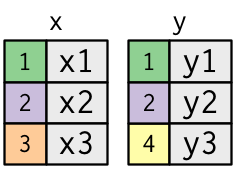
- The colored column represents the “key” variable.
- The grey column represents the “value” variable.
Joining DataFrames with merge()
Inner Join
- An inner join matches pairs of observations whenever their keys are equal:
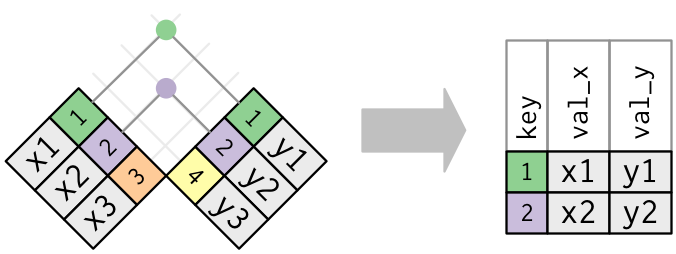
Joining DataFrames with merge()
Left Join
- A left join keeps all observations in
x.
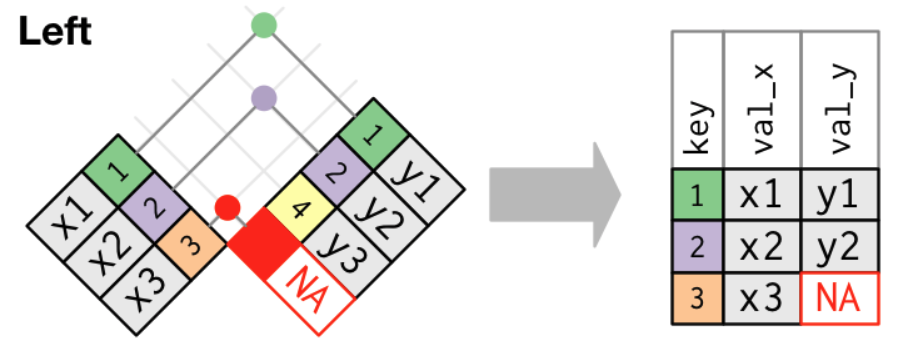
- The most commonly used join is the left join.
Joining DataFrames with merge()
Right Join
- A right join keeps all observations in
y.
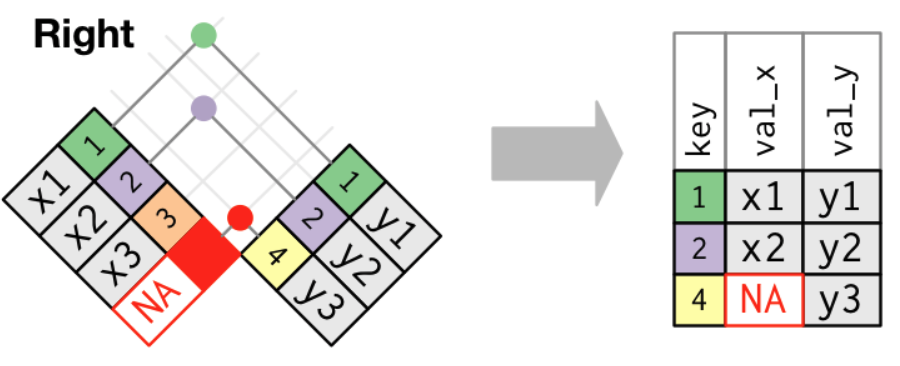
Joining DataFrames with merge()
Outer (Full) Join
- A full join keeps all observations in
xandy.
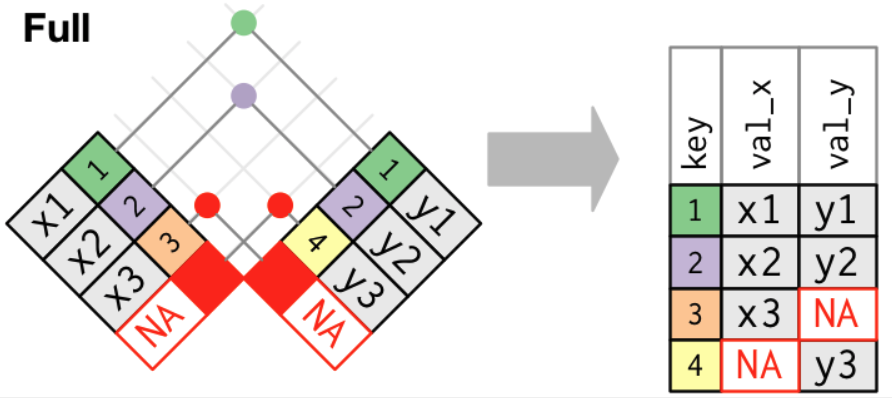
Joining DataFrames with merge()
Duplicate keys: one-to-many
- One
DataFramehas duplicate keys (a one-to-many relationship).
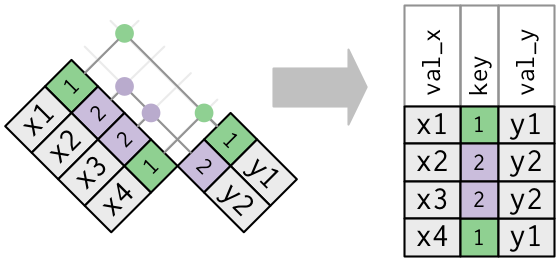
Joining DataFrames with merge()
Duplicate keys: many-to-many
- Both
DataFrameshave duplicate keys (many-to-many relationship).
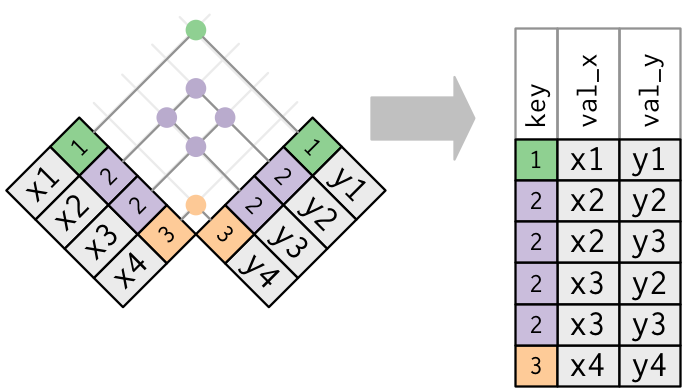
- In practice, it is better to avoid the many-to-many join.
Joining DataFrames with merge()
Defining the key columns
- If the left and right columns do not have the same name for the key variables, we can use the
left_onandright_onparameters instead.
Joining DataFrames with merge()
Let’s do Part 2 of Classwork 7!
Data Concatenation
Data Concatenation
- Concatenation involves combining multiple
DataFramesby adding rows or columns. This method is useful:- When merging datasets that were split into parts;
- When appending new data to an existing dataset.
- Let’s consider the following example DataFrames:
df1 = pd.read_csv('https://bcdanl.github.io/data/concat_1.csv')
df2 = pd.read_csv('https://bcdanl.github.io/data/concat_2.csv')
df3 = pd.read_csv('https://bcdanl.github.io/data/concat_3.csv')- We will be working with
.indexand.columnsin this Section.
Data Concatenation
Add Rows
- Concatenating the
DataFrameson top of each other uses theconcat()method.
- All of the
DataFramesto be concatenated are passed in alist.pd.concat( [DataFrame_1, DataFrame_2, ... , DataFrame_N] )
Data Concatenation
Add Columns
- Concatenating columns is very similar to concatenating rows.
- The main difference is the
axisparameter in theconcat()method. - The default value of
axisis0(oraxis = "index"), so it will concatenate data in a row-wise fashion. - If we pass
axis = 1(oraxis = "columns") to the function, it will concatenate data in a column-wise manner.
- The main difference is the
pd.concat([df1, df2, df3], axis = "columns")
pd.concat([df1, df2, df3], axis = "columns", ignore_index = True) ignore_index=Trueto reset the column indices
Data Concatenation
Add a Series?
- Let’s consider a new
Seriesand concatenate it withdf1:
# create a new row of data
new_row_series = pd.Series(['n1', 'n2', 'n3', 'n4'])
# attempt to add the new row to a DataFrame
df = pd.concat([df1, new_row_series])- Not only did our code not append the values as a row, but it also created a new column completely misaligned with everything else.
- Why?
Data Concatenation
Add a Series?
- To fix the problem, we need turn our
Seriesinto aDataFrame.- This
DataFramecontains one row of data, and the column names are the ones the data will bind to.
- This
- How about this?
pd.concat([df1, new_row_series], axis = 1)
:::
:::
Data Concatenation
Let’s do Part 3 of Classwork 7!